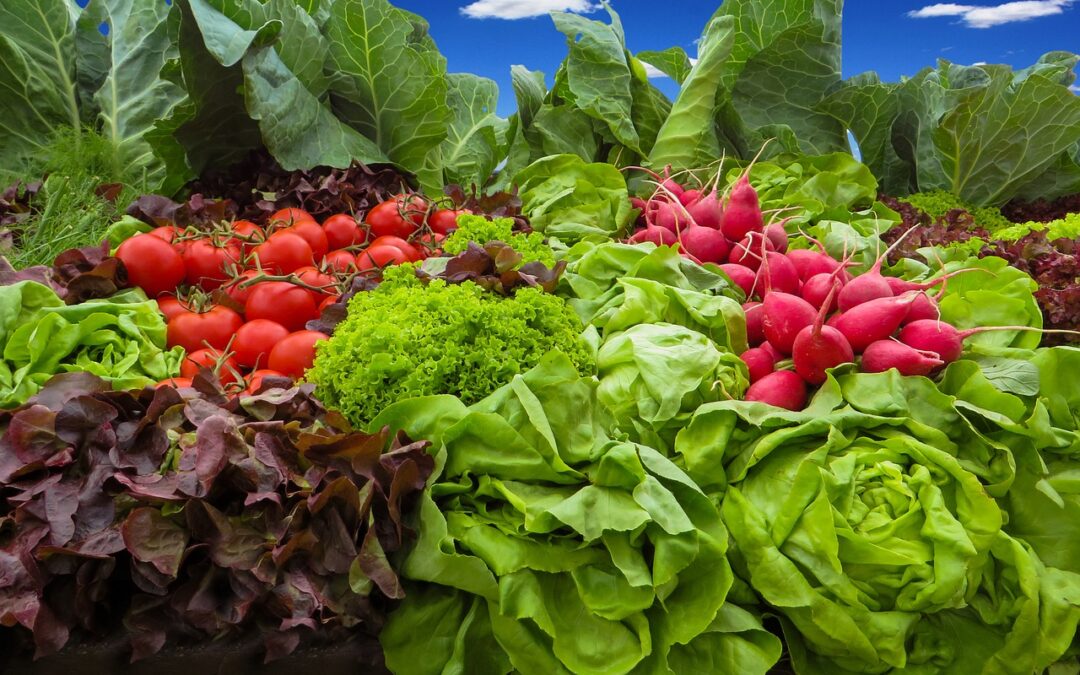A micro-farm is a small-scale agricultural operation using much less land than the average family farm, typically under 5 acres. A micro-farm is usually located in urban and suburban environments.
Given today’s climate (Year: 2020), you have probably been doing more googling about growing your own food and knowing where your food comes from a lot more than you have in the past.
Here in Canada, it’s looking pretty clear that we are heading into our second lockdown for at least a month.
In fact, some areas are already locked down and it looks like the rest of the country is going to follow suit pretty soon.
This is the perfect time to learn about micro-farming so come springtime, you can get out there and start growing your own fresh, delicious veggies.
Because you never know what restrictions will be in place by then and starting a micro-farm will not only give you something to do when everything else is closed, but you will be able to provide homegrown veggies for you and your family.
That’s pretty awesome!
My husband, Jon, and were inspired to start a market garden during the first wave of lockdowns this year, so believe me when I say it is the perfect time to get educated and read as many books and watch as much YouTube as you can about micro-farming, so you too can be ready to jump in as soon as the snow melts.
How big is a micro-farm?
A micro-farm can be as large as 5 acres and as small as under ½ acre.
How do you make a micro-farm?
If you are even just thinking about starting a micro-farm in your back or front yard, I highly recommend the book The Urban Farmer by Curtis Stone, especially if you want to make a full-time income from your micro-farm.
In his book, Curtis outlines many different start-up farm models an urban farmer can use when operating on ½ acre or less.
Here is a brief description of them:
How to Start on Less than $10,000
One-quarter of an acre or less of land is the right amount to start with if you don’t have any previous experience in farming.
On ¼ acre, you have the potential of making $50,000 from the land itself, and even more, if you incorporate greenhouses or microgreens into your repertoire.
Understanding your market is the key to success in farming.
Tips to keep start-up costs low:
- Spend more time looking for deals on your major investments to save cash
- Try to give yourself 6 months prior to starting so you can build the infrastructure you need, prep your land, and look for the best deals on used equipment
- Kijiji and Craigslist are good options for used equipment but you may have to drive a fair distance to get them.
$21,600 Part-time Farmer in Your Own Backyard
This is the ideal situation if you’re looking to keep your day job for a year or two, maybe scale back your hours a bit and run your farm on a part-time basis.
This model affords you the ability to ease your way into micro-farming, and give yourself a little bit of a cushion and security by having a primary source of income.
One-tenth of an acre is an ideal size for this type of micro-farm.
With the right planning, this size of micro-farm can generate $21,600 in a 30 week season.
Your focus should be about learning the systems, less about profits, so you can scale up at a later date. After you gain some experience, you can put more emphasis on maximizing profits, if you so desire.
This is an ideal model for the weekend warrior who works their 9-5 job during the week and kills it out in their garden on the weekends.
Eventually, if you like micro-farming, you could scale down your hours at your other job and dedicate more hours to your micro-farm. This would allow you to increase your profits accordingly.
Keep in mind, for this model to work, you will have to commit to at least 20 hours a week plus a half-day at the farmer’s market.
$58,800 Micro Farm on 1/10 Acre
You can still be running a business at your own home in the ‘burbs or urban lot with this model.
By growing certain profitable crops (outlined in the next section), the income potential is $28,800 from field crops alone in a 30 week season.
This number can increase significantly with the use of greenhouses and microgreen production. With this model, your success depends on being able to cater to very niche markets and being able to move all the 10 or so crop varieties you will grow.
Establishing good relationships with your clients and constantly keeping your eyes and ears open when communicating with them is going to be vital to your success.
$87,000 Small Farm on ¼ Acre
Farming ¼ acre is the perfect place to start if you are new to farming, and are prepared to make this your full-time job.
As an aside: We are starting our farm on just over ¼ acre of production for our first year.
To achieve the highest potential gross income from this model, you will probably have to employ at least one other person, part or full-time, depending on how much time you are willing to commit.
Both my husband and I will be working full-time on our farm, with the part-time help of our 12-year-old son, who, fortunately for us, is a great worker who loves to be outside.
The advantage of this micro-farm model is that you are growing a small diversity of crops, which offers you more marketability in both farmer’s markets and restaurants.
This scale of operation allows you to broaden your customer base a little more easily.
$123,000 Semi-Diversification on ½ Acre
Half an acre is a lot of land for an urban micro-farm, any more than this and you’re heading into more rural market garden models.
This size of micro-farm is not recommended for a beginner, it’s for those who already have a season or two under their belt.
This size of farm can be operated by two full-time people (possibly co-owners). You may even need temporary help like interns or volunteers to help with market prep on the weekends.
Keep in mind, with a larger farm, you will have higher costs and transport will be considerably higher.
Careful consideration BEFORE you make the choice to scale this big should be given to see if it’s actually worth it.
The key to expanding your farm is to understand market demand.
If you are selling out at the farmer’s market every week, and you can’t grow enough for your restaurants, then you should probably expand to meet demand.
The sweet spot for most micro farmers is to be in a place where you’re almost meeting the demand, but not quite. It’s better to sell everything every single week than to not sell your product.
Every time you go home with product from the market or are producing too much, then you are working for free, and that really cuts into your lifestyle and bottom line.
The goal is to sell everything you grow.

What Should I Farm On 1 Acre?
According to Curtis Stone, there are five characteristics that make a crop well suited for growing on an urban micro-farm.
These characteristics are:
Shorter Days to Maturity
Shorter days to maturity (DTM) mean that the crop grows and is ready to harvest within 60 days or less.
Examples include:
- Radishes
- Spinach
Curtis grows the fastest varieties of vegetables, no matter what the crop is. This allows for fast turnover of crops and subsequently more profit.
High Yield per Linear Foot
Consider how much yield will come from one linear foot of bed.
For example, compare cabbage yield to radishes. Radishes are ready in 28 days, and in the same space as one cabbage, one can harvest 8 bunches.
The general idea is that you get maximum value from space.
Higher Price per Pound
Curtis recommends not growing anything that sells for less than $4 per pound. Kale and radishes are good vegetables that meet this criterion, they sell for $5 per pound and meet other criteria: long seasonality and high yield per square foot.
Microgreens are superstars in this category as they command $20 per pound.
This doesn’t mean that you shouldn’t grow crops that sell for less than $4 a pound, just make sure they hit other criteria as well.
Long Harvest Period
Long Harvest Period means it’s a crop that can be planted over and over again for a minimum 4 month period, or you can keep harvesting the same crop for 4 months.
Radishes and kale hit the mark here, as you can keep replanting radishes, and kale can be harvested most months of the year.
Popularity
High demand and low market saturation are the single most important characteristics of them all.
You can grow high value, quick growing crops all day long, but if no one is buying them, they’re not worth anything.
Kale is a good example here, it’s not the highest value per pound, but it’s easy to grow and you don’t have to work too hard to sell it.
It definitely takes some research and number crunching to decide what crops to concentrate on for your micro-farm.
I highly recommend Curtis Stone’s book The Urban Farmer and YouTube channel for guidance, as he goes into much more detail on how he decides what crops to grow as well as how to market your produce (and much more valuable information).
I hope this article inspires you to start a micro-farm on your property, or at least to look into it come springtime.
Let us know in the comments below if you have started a micro-farm, or thinking about it, and how it’s going so far.
Stay Local,
Kathy & Jon
your friendly neighbourhood growers


0 Comments